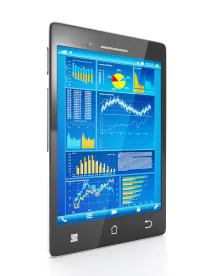2017 will likely be the year of blockchain, and active fund shops should take notice. With over a quarter trillion dollars fleeing actively managed funds, 2016 was a disappointing year for active managers in the U.S. Blockchain’s cost savings might just be what the doctor ordered.
For 7 years the world struggled to understand bitcoin. Bitcoin was introduced around November 2008, declared property by the IRS in March 2014, and declared a commodity by the CFTC in September 2015. With bitcoin no longer novel, 2016 became the gestation period for bitcoin’s more profound invention, blockchain. As 2017 picks up momentum, we will begin to see financial institutions bringing blockchain applications in from the fringes of the industry and revolutionizing the financial markets. Consider the race by banks to patent their blockchain ideas. It doesn’t look like it will take 7 years for blockchain’s potential to become reality.
Active funds may have the most to gain by endorsing blockchain. They are losing ground to lower cost passive funds and ETFs. One of the promises of blockchain is the reduction in time and expense of settling transactions. International Financial Data Services reports funds could save $100M transacting via blockchain, and do so while reaching millennials through mobile applications. Thus, in the near term, blockchain will help active funds reduce fees by slashing distribution costs.
But, why stop at distribution? Imagine a world, like NASDAQ and t0 have, where all securities transact on the blockchain and settle within 10 minutes. Would forward pricing go away? Would active funds trade just like ETFs? Would the arbitrage mechanism be eliminated forcing ETFs to restructure? Clearly, blockchain can reduce distribution costs for active funds, but that’s just the beginning.



 />i
/>i

